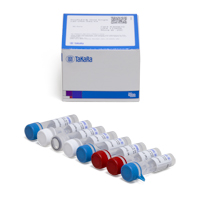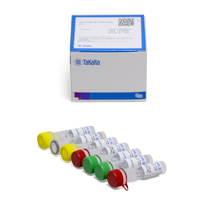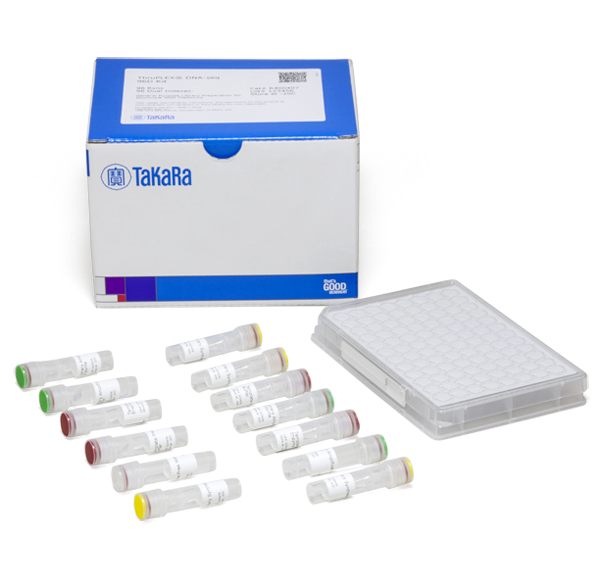Indexing FAQs
Adding indexes to sequencing libraries allows you to pool (multiplex) and sequence multiple libraries together, saving both sequencing time and cost. Deciding on an indexing strategy is an important consideration for your sequencing experiments and one that comes with many questions. Fortunately, we've provided answers below and, if you need more, feel free to reach out to ask one of our PhD-level technical support scientists or sales team.
General questions about indexing
How does dual indexing work?
- For single-read flow cells, dual indexing introduces 16 additional cycles of sequencing: 8 cycles for the Index 1 (i7) Read and 8 cycles for the Index 2 (i5) Read.
- For paired-end flow cells, dual indexing introduces 23 additional cycles of sequencing: 8 cycles for the Index 1 (i7) Read, 8 cycles for the Index 2 (i5) Read, and 7 nonimaging, chemistry-only cycles at the beginning of the i5 Read.
What are the advantages of using dual- versus single-indexed libraries?
There are several advantages of using dual indexes:
- Dual indexes increase the accuracy of sample identification by adding another identifier to minimize issues caused by index-hopping events
- Dual-indexed libraries allow higher multiplexing and the ability to run more samples per lane
- Dual-indexed libraries are sequenced with 2 additional reads, termed Index 1 (i7) Read and Index 2 (i5) read
What is index hopping?
Index hopping (or index switching) is a known phenomenon where sequencing reads are assigned to incorrect indexes, potentially leading to misalignment of reads or incorrect assumptions in downstream analyses. Using unique dual indexes minimizes index hopping and is recommended for sensitive applications.
How can I mitigate index crosstalk or "sample bleeding" issues?
The following steps may help you mitigate these issues:
- Use dual-indexing kits, rather than single-indexing kits, in library preparation
- Increase the percentage of PhiX spike-in, which will reduce the number of adjacent clusters with indexes
- Lower the amount of library loaded to decrease the cluster density
What is the difference between single and paired-end reads?
- For single reads, only one end of the nucleic acid fragment is sequenced at your indicated length (e.g., 50-, 75-, or 100-bp reads)
- For paired-end reads, nucleic acid fragments are sequenced at the indicated length first from one end, then from the other, allowing the detection of insertions, deletions, and genomic rearrangements
Can I do paired-end sequencing with single-indexed libraries?
Yes, paired-end sequencing can be done with single-indexed libraries. This is because single vs. dual-indexed adapters have nothing to do with sequencing due to how the sequencing is performed. Sequencing is done using Read Primer 1 or Read Primer 2, both of which are present in all libraries. You can also do single reads even if you use dual-indexed kits.
Can I perform single-read runs and still obtain both index sequences?
Yes, both index sequences can be obtained from single-read runs. Please select the appropriate workflow based on the type of flow cell (e.g., single-read or paired-end) so that the correct chemistry is used. If you are using a single-read flow cell, the TruSeq® Dual Index Sequencing Primer Box, Single-Read (Illumina, Cat. # FC-121-1003) is necessary to sequence both index reads.
What should I consider when multiplexing samples?
Any samples can be multiplexed. However, to get the best results, you should consider the following:
- Fragment lengths from each sample must match. Libraries of different lengths will hybridize to the flow cell at different efficiencies, which can lead to uneven sample coverage.
- All samples must use the same barcoding strategy (e.g., do not mix and match single-indexed samples with dual-indexed samples).
- All samples must be barcoded with the same type of kit (e.g., you cannot mix TruSeq® barcoded samples with Nextera® barcoded samples).
- Illumina-equivalent indexes must be known if using non-Illumina library prep kits. Alternately, you must know the index sequences and use them as a custom barcode.
What guidelines should I follow when pooling indexes?
For HiSeq®/MiSeq® instruments, Illumina uses a red laser/LED to sequence bases A and C, and a green laser/LED to sequence bases G and T. For each cycle, both the red and green channel need to be read to ensure proper image registration (e.g., A or C and G or T must be in each cycle). If this color balance is not maintained, sequencing the index read could fail.
For NovaSeqTM, NextSeq®, and MiniSeqTM instruments that use two-color chemistry, valid index combinations must include some indexes that do not start with ‘GG' in the first two cycles.
Questions about specific indexing applications
DNA-seq indexing kits
Are Takara Bio indexing kits compatible with library prep kits from other companies?
If the library preparation involves ligation of full-length barcoded adapters (e.g., full-length Y-shaped adapters with a T-overhang), our indexing primers may not be efficient for PCR due to an extra base. An example of this would be the TruSeq HT (now called TruSeq CD) adapters that are added by ligation.
Are indexing kits from other companies compatible with ThruPLEX and PicoPLEX library prep kits?
If full-length barcoded adapters from other companies are added by PCR, they will work with our kits (and our indexes will work with their kits). However, due to primer concentration differences, PCR cycling conditions will need to be optimized.
Can libraries made with your DNA unique dual index kits be pooled with libraries made using TruSeq CD indexes?
We do not recommend mixing libraries made with different index kits. If you want to run different libraries made with different index kits, we recommend loading each library in a different lane, as running libraries made with different index kits in the same lane may compromise your results.
Are the Takara Bio DNA unique dual indexes the same as the Illumina TruSeq UD or IDT for Illumina UD sequences?
Yes, our DNA unique dual indexes are the same as the Illumina TruSeq UD or IDT for Illumina UD sequences.
For indexes in 96-well-plate format: can I generate just a few samples at a time?
As we recommend no more than 4 freeze/thaw cycles for indexes provided in a 96-well-plate format (DNA HT dual index kits, Cat. # R400660–R400663), we strongly recommend processing at least 24 samples at a time.
What are the index adapter sequences after preparation using ThruPLEX DNA libraries?
- Index 1 (i7) Read:
- 5'-CAAGCAGAAGACGGCATACGAGATNNNNNNNNGTGACTGGAGTTCAGACGTGTGCTCTTCCGA*T*C*T-3'
- Index 2 (i5) Read:
- 5'-AATGATACGGCGACCACCGAGATCTACACNNNNNNNNACACTCTTTCCCTACACGACGCTCTTCCGA*T*C*T-3'
Indexing reagents
DNA index kits enable users to amplify and tag DNA-seq libraries with index sequences.
Library prep from cfDNA or FFPE DNA (250 pg–200 ng)
Reliable and consistent data from difficult samples using a streamlined workflow and molecular tags for error correction.
Integrated WGA & library prep
Generate high-quality DNA libraries from single cells for sequencing on Illumina platforms.
General purpose library prep (50 pg–50 ng)
ThruPLEX DNA-Seq Kit converts fragmented dsDNA to Illumina NGS libraries using a three-step, single-tube workflow that can be completed in two hours.
Legacy ThruPLEX DNA-seq kits
Legacy products for completing ongoing DNA-seq experiments with low-input, single-cell, or cell-free DNA.
DNA-seq FAQs
Frequently asked questions about DNA-seq NGS kits
Takara Bio USA, Inc.
United States/Canada: +1.800.662.2566 • Asia Pacific: +1.650.919.7300 • Europe: +33.(0)1.3904.6880 • Japan: +81.(0)77.565.6999
FOR RESEARCH USE ONLY. NOT FOR USE IN DIAGNOSTIC PROCEDURES. © 2025 Takara Bio Inc. All Rights Reserved. All trademarks are the property of Takara Bio Inc. or its affiliate(s) in the U.S. and/or other countries or their respective owners. Certain trademarks may not be registered in all jurisdictions. Additional product, intellectual property, and restricted use information is available at takarabio.com.







